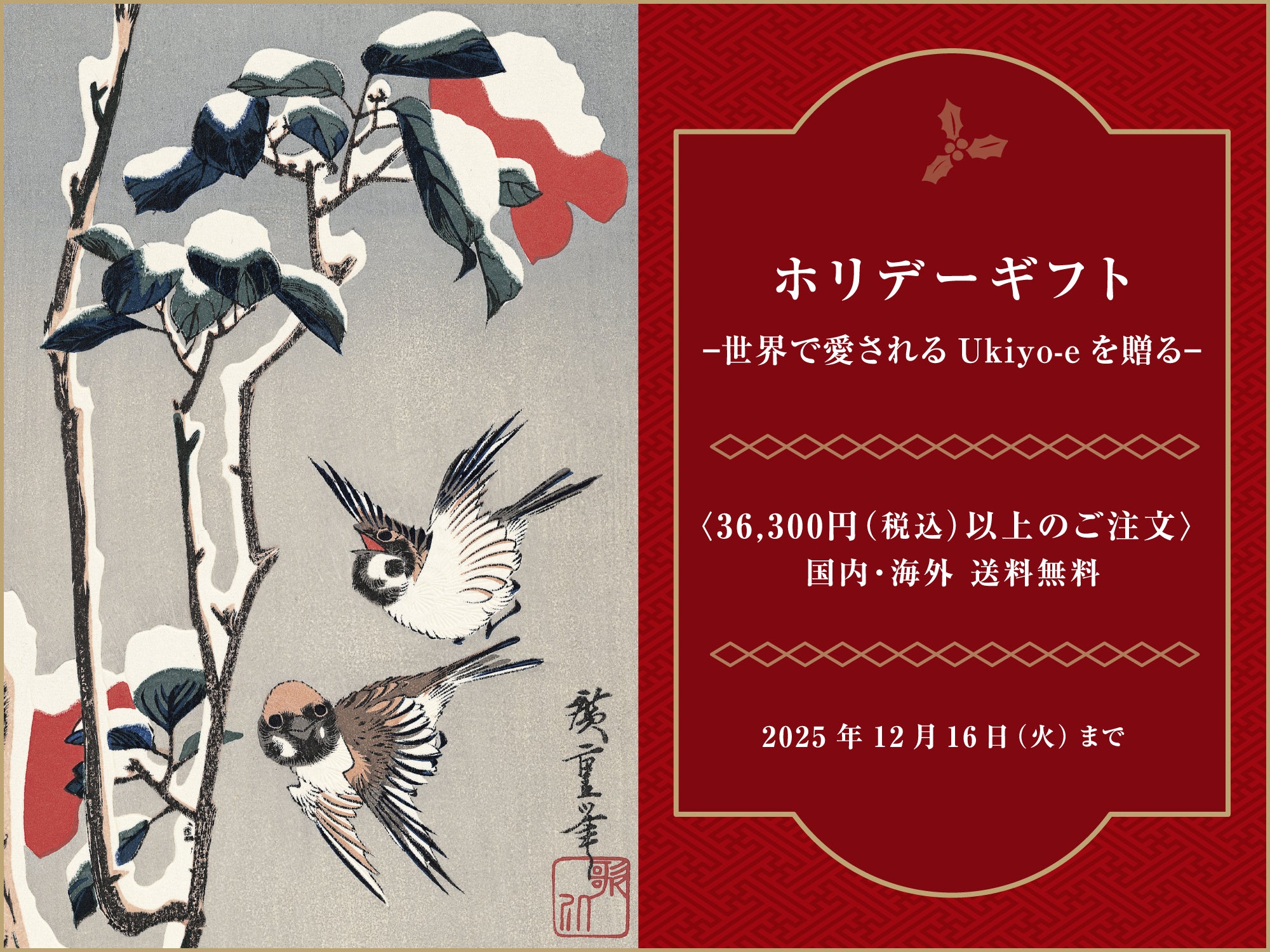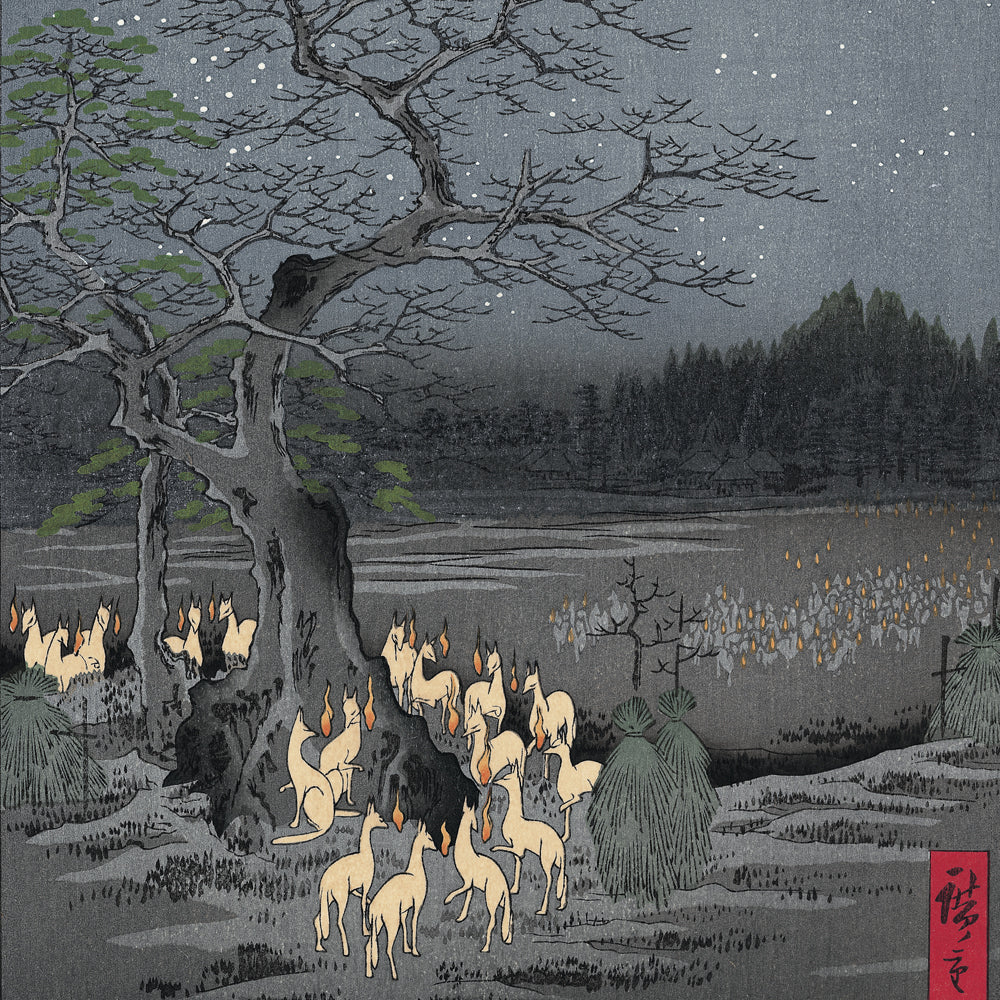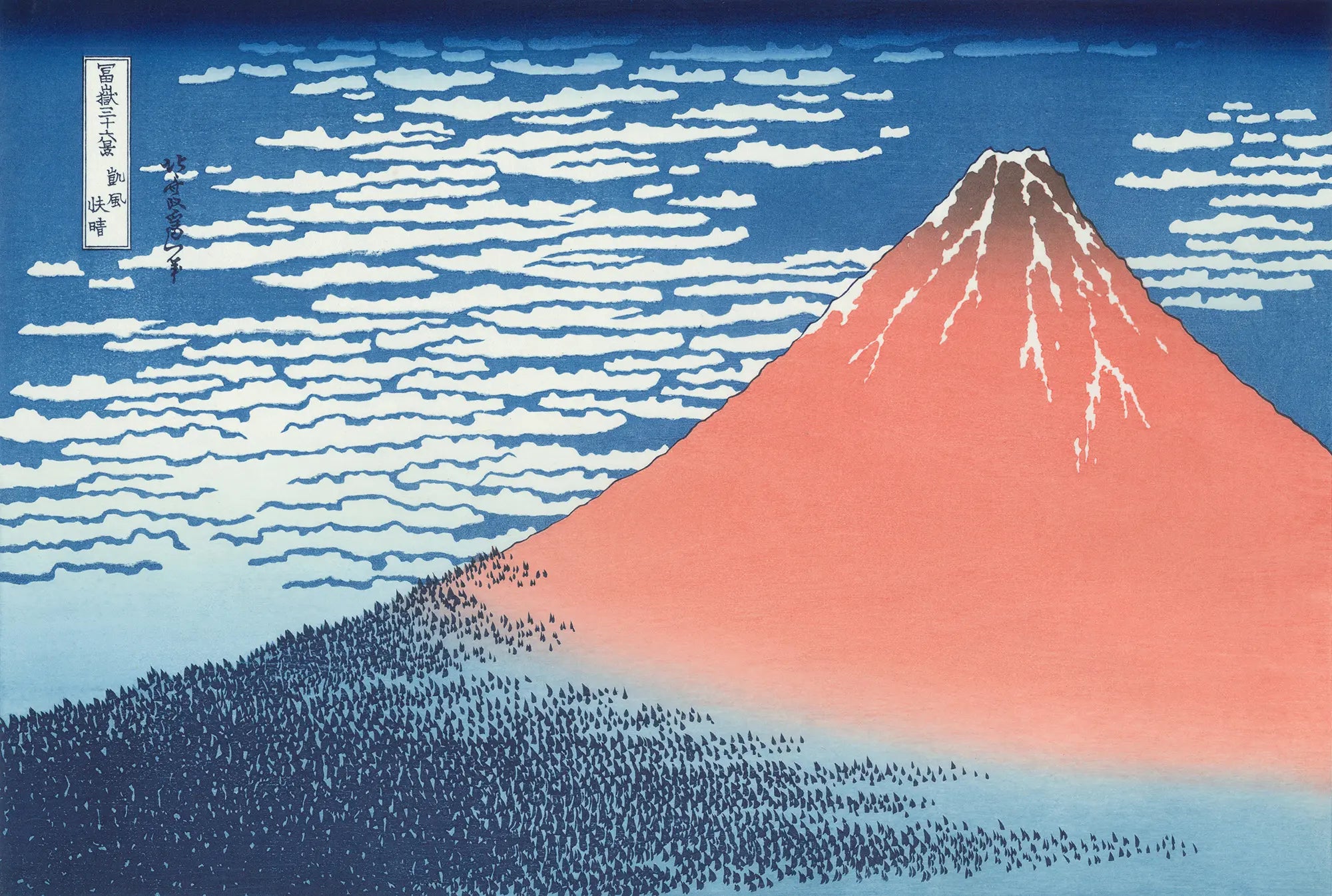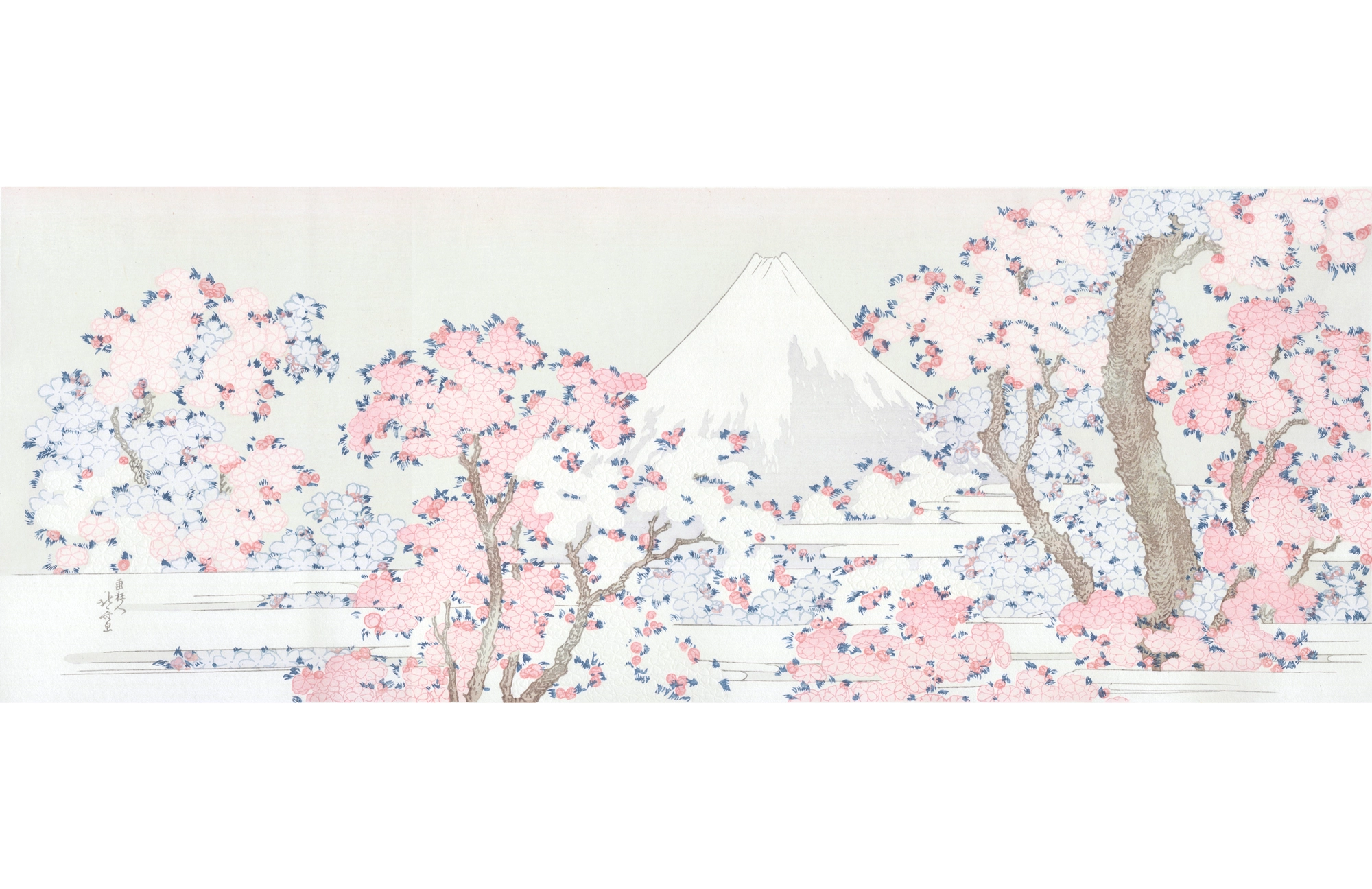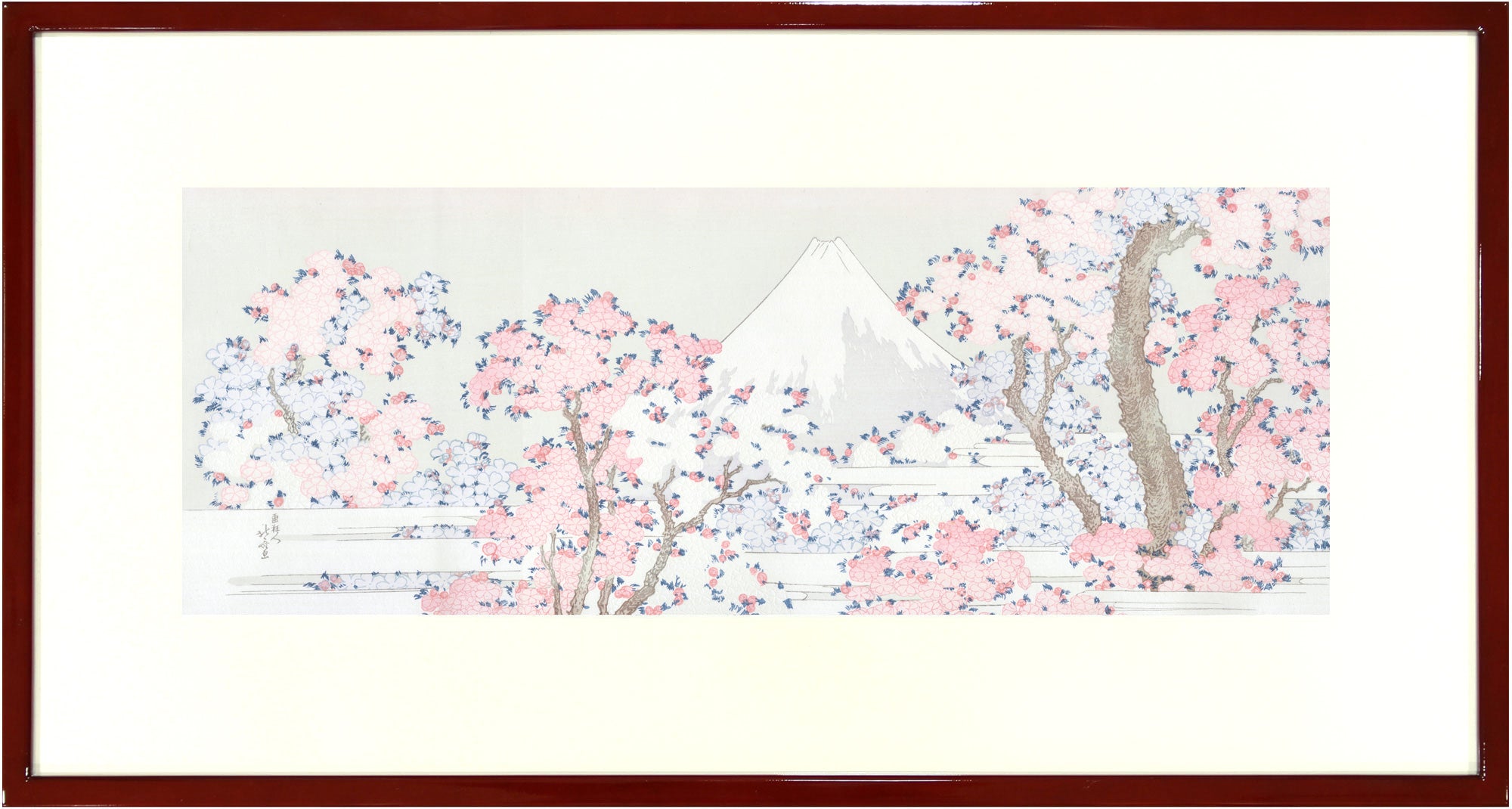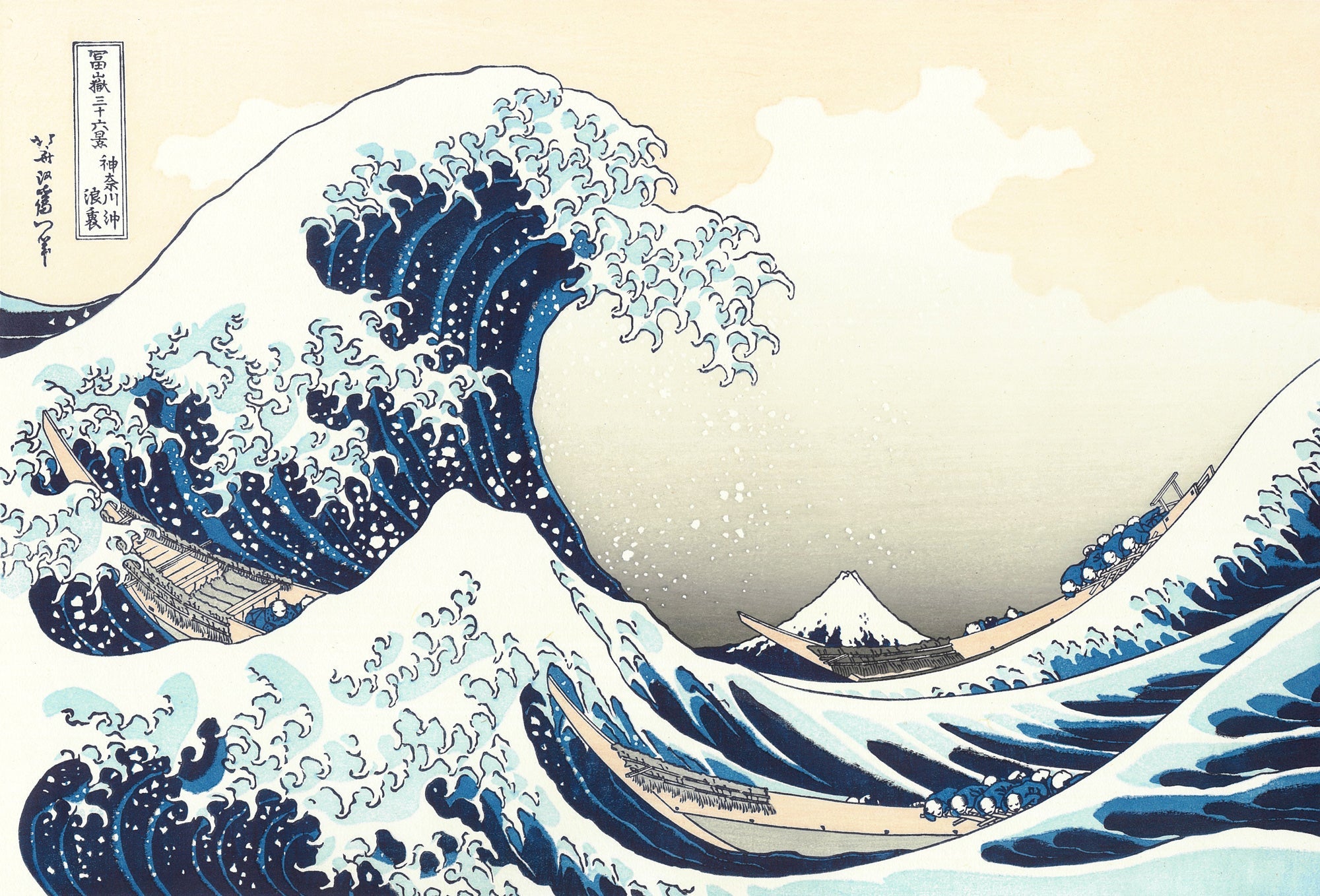
Katsushika Hokusai
The Great Wave off Kanagawa
<p>Loved by People Around the World<br/>"The Great Wave"</p>
Katsushika Hokusai is the most famous Japanese Ukiyo-e artist in the world, and “The Great Wave off Kanagawa” is renowned as his greatest masterpiece. Mount Fuji sits quietly in the background as the magnificently powerful great wave towers over it. The bold composition and delicate depiction shocked people around the world. The work is well known overseas as “The Great Wave,” and it is said that the composer Claude Debussy took inspiration from it to write the symphonic poem “La mer” (The Sea). “The Great Wave” is still highly acclaimed across the world today and continues to be featured as the main attraction in numerous exhibitions both in Japan and abroad. In 2017, it was sold at a Christie's New York auction for 943,500 dollars, which is the world record for an Ukiyo-e woodcut print.
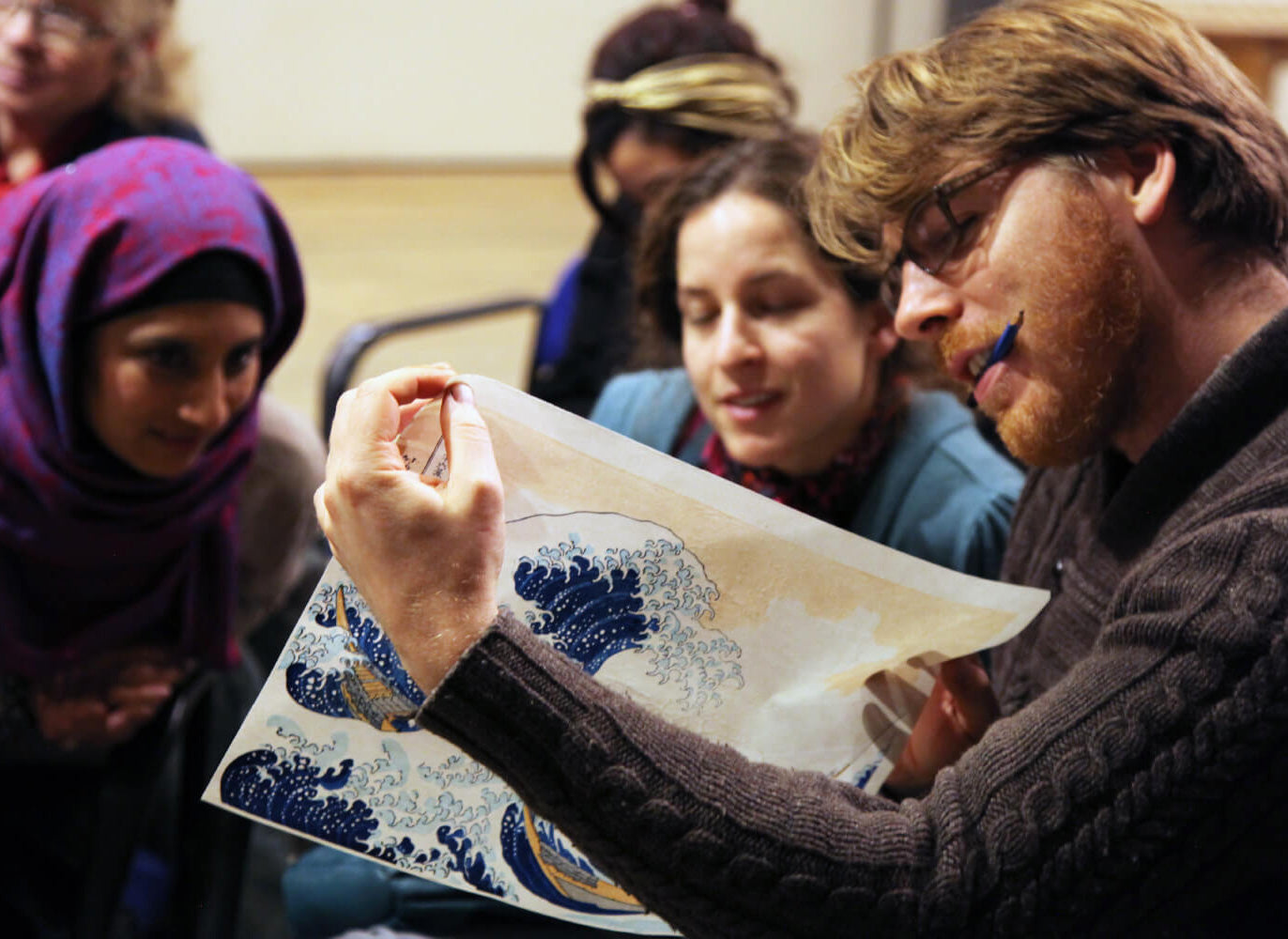
Hokusai's Pursuit of the Realistic Great Wave
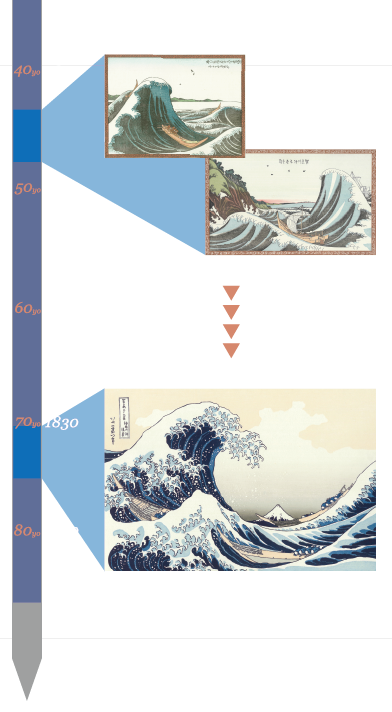
Hokusai was known to portray everything under the sun, but one of his greatest passions was the depiction of waves, a challenge he continued to pursue for his entire life. He drew waves countless sometimes, striving to capture their ever-changing shapes and movement. “The Great Wave off Kanagawa” and “Oshiokuri hato tsūsen no zu,” an early work that is said to be its preliminary model, are similar in their compositions but the way the waves are portrayed is completely different. “The Great Wave off Kanagawa” was the product of Hokusai's never-ending attempt to create realistic and captivating representations of waves.
<p>Carving Delicate and Dynamic<br/>Lines in an Authentic Manner</p>
Compared to other Ukiyo-e artists, Hokusai uses more delicate lines in his work, and sophisticated skills are required to carve out the lines in a faithful way. In particular, the nuanced and intricate lines used in the crest of the wave seen in “The Great Wave off Kanagawa” are a true test of the carver's skill. The carver pays careful attention to the rhythm created by the lines and the overall balance as he uses his knife to create the powerfully dramatic composition, and even appreciates the dynamics of Hokusai's paintbrush as he carves out the different lines.
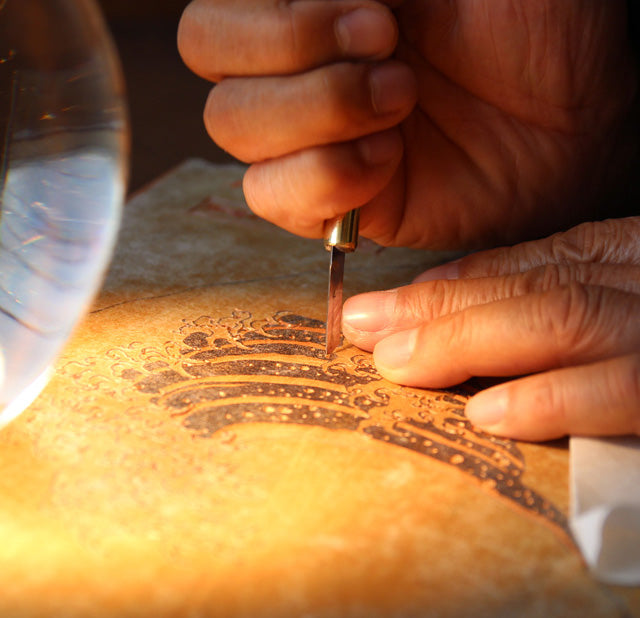
<p>Printing the Brilliant "Blue" <br/>of Hokusai's Wave</p>
“Blue” was essential to the depiction of waves that Hokusai tirelessly pursued. The synthetic pigment Prussian blue (called “bero-ai,” which means “Berlin blue”) imported from Europe in the late Edo Period was used to print Hokusai's work. For “The Great Wave off Kanagawa,” Prussian blue was used in two different concentrations to skillfully print one color over the other to create the vividly colored and three-dimensional great wave.
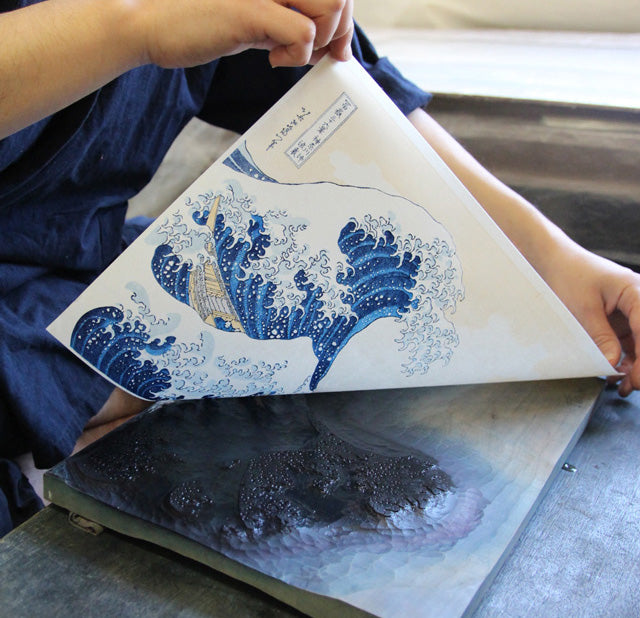
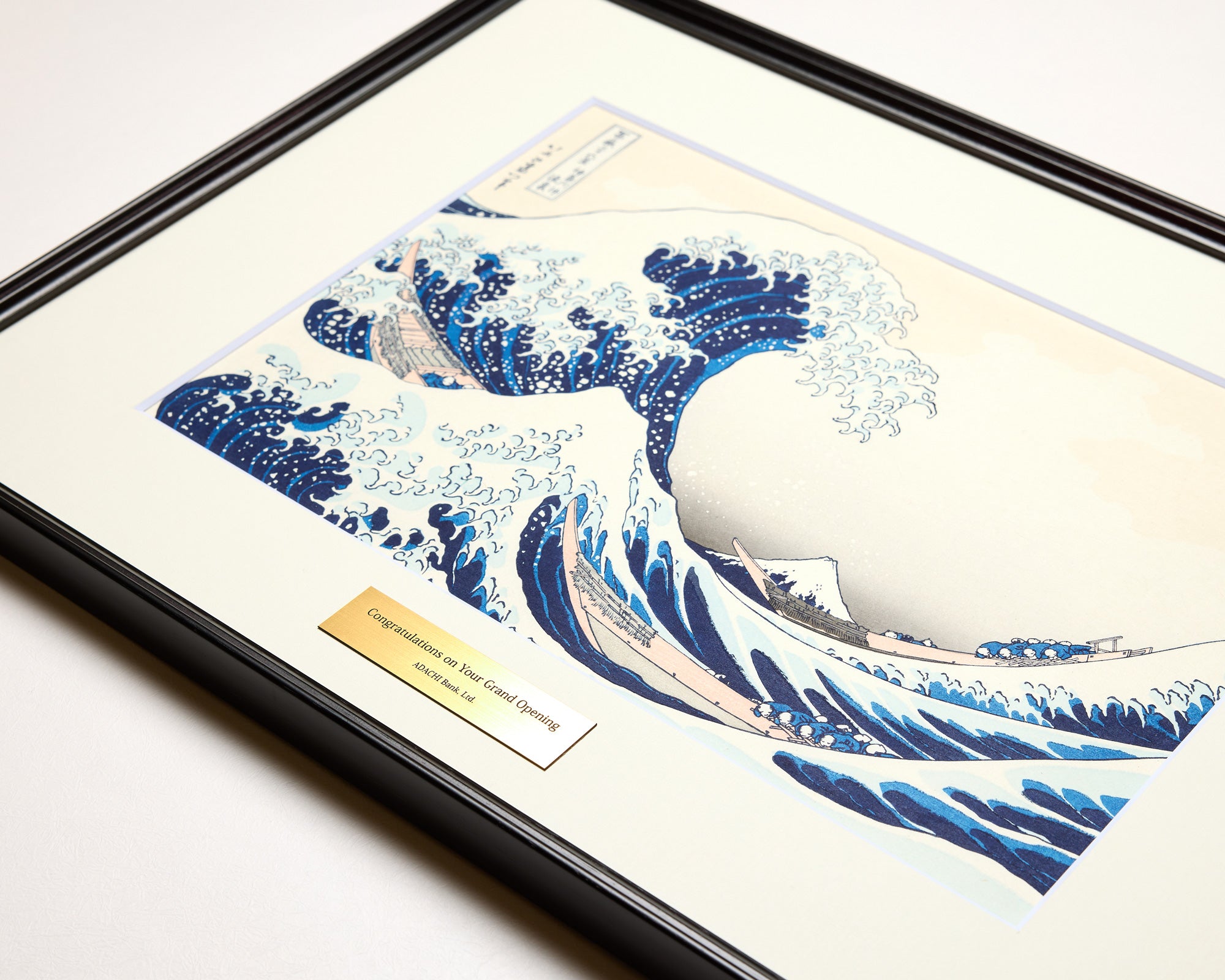
The Most Popular Ukiyo-e in the World
“The Great Wave” is highly appreciated the world over as the most important work of Hokusai and Ukiyo-e and is still loved by people today. It is also the most popular among the works we offer.
We hope you will see and enjoy “The Great Wave,” created by the artisans at Adachi Institute of Woodcut Prints who have inherited and preserved the Ukiyo-e printmaking techniques of the Edo Period to painstakingly produce each print.
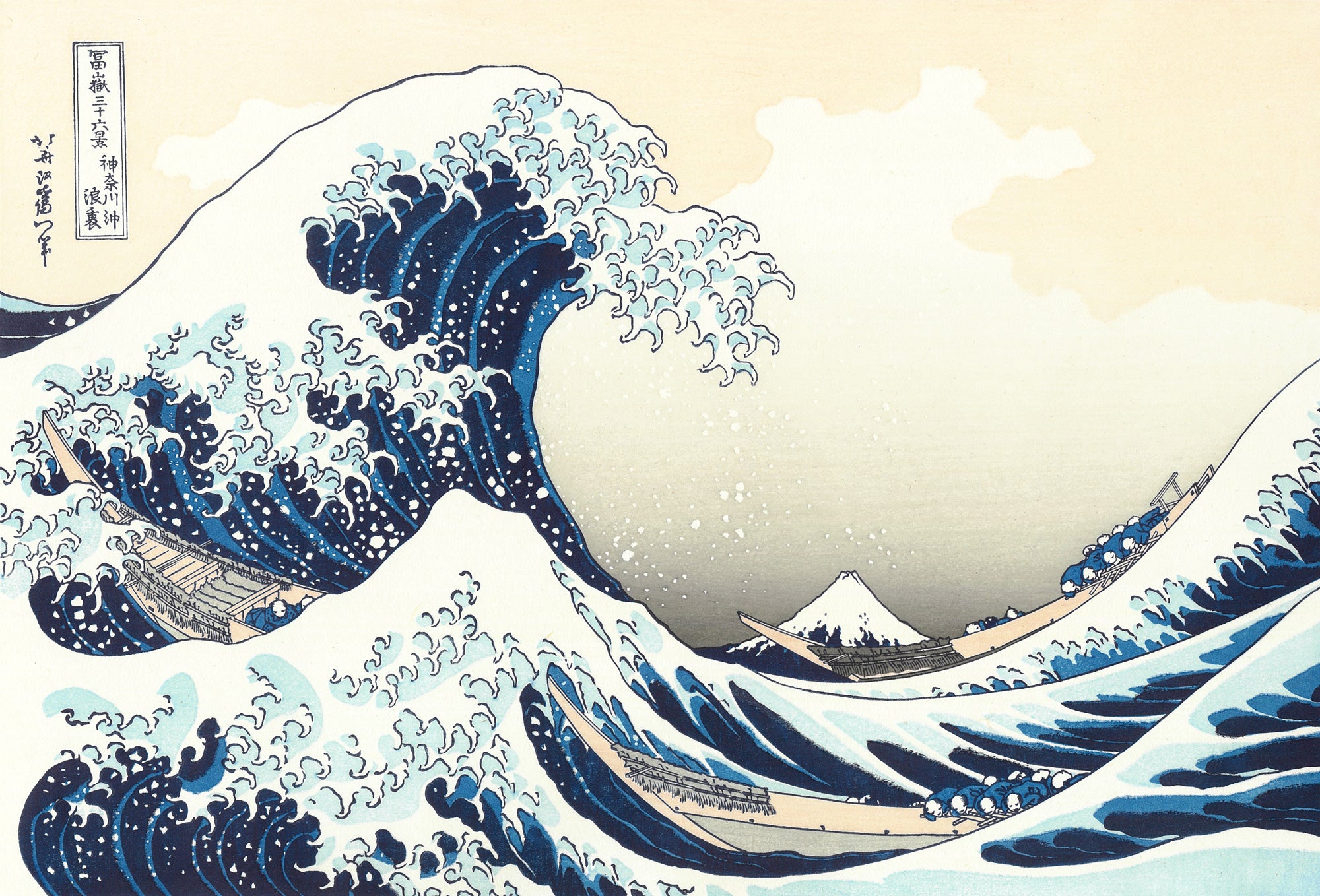

The Great Wave off Kanagawa -Thirty-six Views of Mt.Fuji-
Now Hokusai's "Great Wave" is representative of ukiyo-e itself. It is one of Hokusai's most successful series, "Thirty-six Views of Mt. Fuji" and astonishing for its fantastic composition and powerful brushwork, showing a giant wave crashing over a boat. The low-angle perspective and shaded waves constitute the key to this work which is one of the foremost masterpieces, and most well known of all the ukiyo-e landscape compositions.
Price
| Size/Weight | Print Size: 26.4 × 38.6 cm |
| Material | Paper: Echizen Kizuki Hosho Washi made by Living National Treasure, Ichibei Iwano |
| Feature | Type of print: Woodcut Print |
| Notes | This product includes: ・An explanation of the work in English and Japanese ・A leaflet to introduce the production process of ukiyo-e print |

The order for domestic destination(inside of Japan) is shipped by Yamato Transport and international destination (outside of Japan) is shipped by either FedEx or Japan Post's EMS (Express Mail Service).
Domestic Shipping (Inside of Japan)
Yamato Transport Co., Ltd.
You can choose the delivery date and time window. Shipping fee is 700 yen for any destination inside of Japan.
<Free Shipping Service>*Domestic destination only
Free Shipping is available when a total of purchase is over 50,000 yen (for one destination) .
If you would like to choose the delivery date and time window, please fill the column of "Request of Delivery Date". Please note that only the date five business day after your order can be chosen and also this service might be canceled under some circumstances. Please ask us for details.
International Shipping (outside of Japan)
FedEx
Delivery dates are varied depending on the destination countries and areas.
EMS international shipping service may be used for the area which has no or limited FedEx delivery.
Actual shipping fee will be charged for the international delivery. (No free shipping over 50,000 yen purchase is applied for the international shipping.)
*No shipping is available on weekends.
Estimated Fee and delivery time
Area A : East Asia / Southeast Asia
Area B : North America / Indonesia
Area C : Europe / Middle East
Area D : Australia / New Zealand
Area E : South America / Africa / Other Areas
| Area | Delivery time | 1-5 Unframed Prints | One Framed Print |
|---|---|---|---|
| A | 3-6Days | ¥3,600 | 5,300 |
| B | 4-6Days | ¥4,000 | ¥6,000 |
| C | 4-7Days | ¥4,400 | ¥7,000 |
| D | 4-7Days | ¥6,500 | ¥8,000 |
| E | 4-7Days | ¥7,500 | ¥13,500 |
*Please read notes about international shipping
Customs
Please note that the customs may be charged to the consignee during the international shipping process. The customs' manner and fee are various depending on the country where the delivery destination is and the purchaser is required to be responsible for anything regarding customs. The purchaser is considered to agree with being responsible for customs when you place an order.
*FedEx offers the service to charge the custom to a purchaser (not a consignee) after the fee is fixed for the destination country. This service is useful when you would like to ship the item as a gift and do not want the consignee to pay for the custom. Please request us if you would like to use this service.
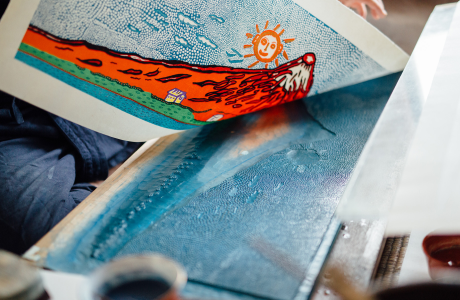
Adachi's Philosophy and Mission
At Adachi Institute of Woodcut Prints, we create attractive works that are in keeping with the times while maintaining the basics of traditional woodcut printing techniques.

Adachi's Meticulous Quality and Materials
At Adachi Institute of Woodcut Prints, we use carefully selected materials and tools to bring out the original beauty of woodcut prints to the fullest.
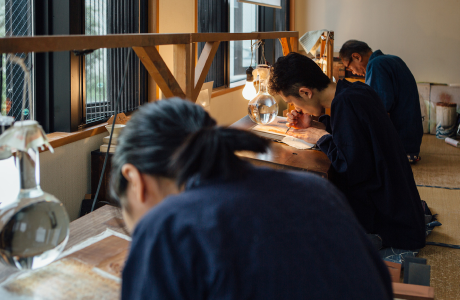
Traditional Techniques and Adachi's Artisans
The production of ukiyo-e, which developed as a commercial printing method, focused on efficiency and profitability. And so, all processes are streamlined and sophisticated. We will introduce the basics of ukiyo-e techniques through the production process of Katsushika Hokusai's masterpiece "The Great Wave off Kanagawa."
Works by the same artist
2 colors available
